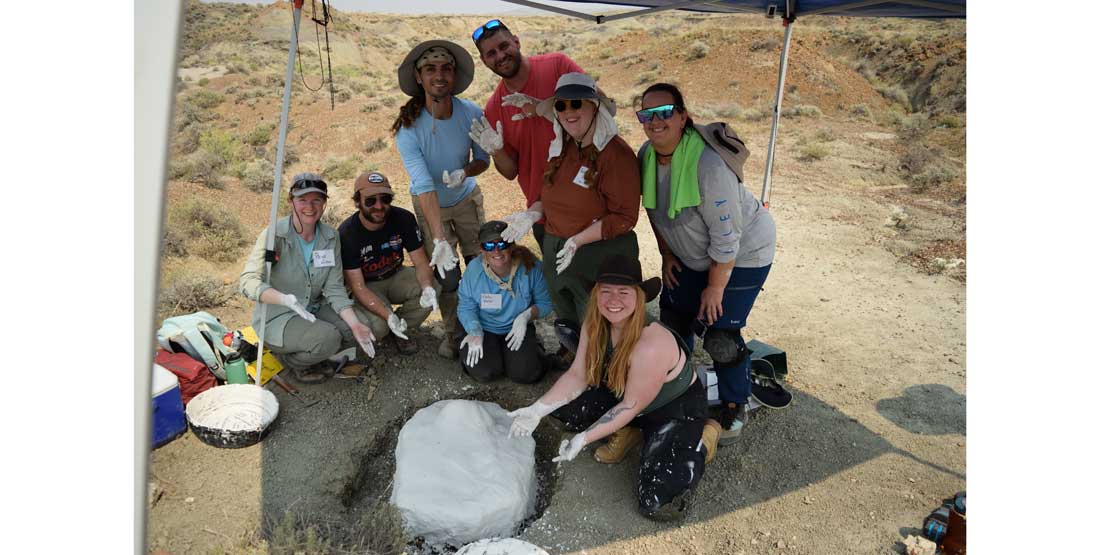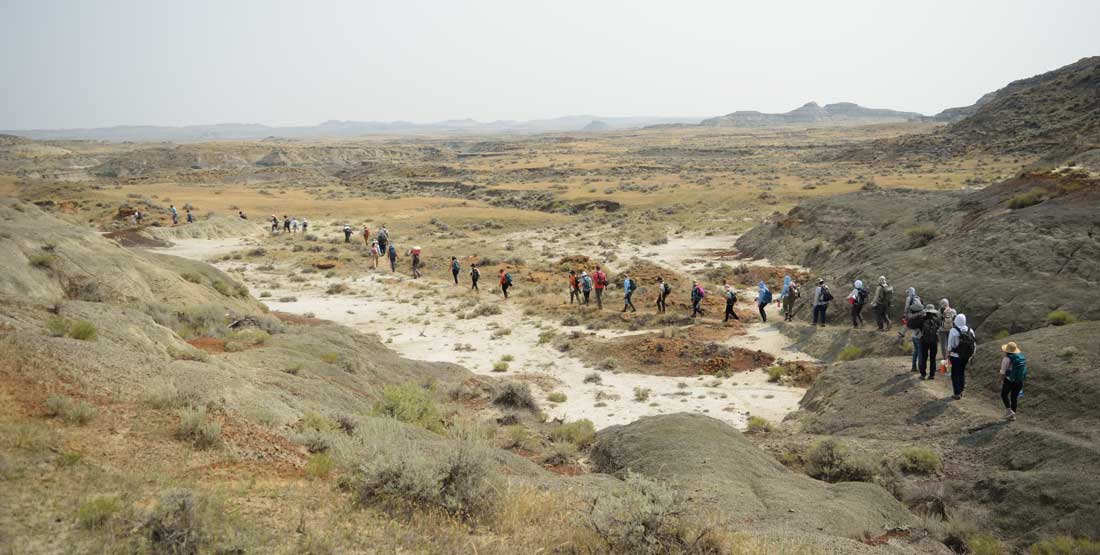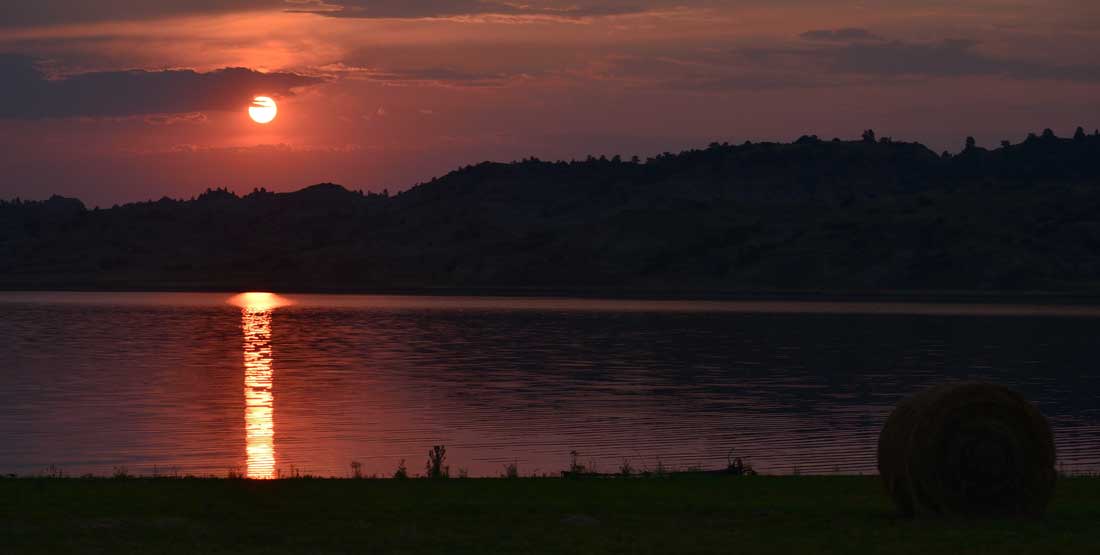Day 1 | Arrival and Orientation
DIG participants arrived at Billings Airport where they met up with DIG staff to be shuttled together to basecamp at the Hell Creek Recreation Area. Upon arrival, participants checked in with staff and began pitching the tents that would become their community throughout the week. Participants were quick to build connections and mingle with each other and staff.
Day 2 | Microfossils and Geology
On the first day of DIG fieldwork, participants got a crash course on geology and identifying microfossils before heading out to explore sites across the Hell Creek Formation.
Once in the field, participants got their first look at the sedimentary rock of the Hell Creek Formation. This rock is full of countless fossils — from the teeth of Tyrannosaurus rex to the bones of bite-sized fish.
Day 3 | Macrofossils
Macro Day (often called “Dino-Day”) is the day most reminiscent of scenes from Jurassic Park. Participants met up with the Hell Creek Project’s active field crews to learn the basics of dinosaur excavation. This year, the field crews had been focusing on on three different Triceratops skeletons located on the Thomas’s Ranch near Jordan, Montana.
Participants placed field jackets made of plaster and burlap on large fossils to protect them on their journey from the field to the lab. They worked to mix the plaster and got their hands dirty placing the strips of plaster covered burlap onto the fossils. One group of participants even flipped a fossil jacket over, separating the bone from the rock so it could be carried out of the field. Other participants worked to expose new bones from the hillsides and uncovered fossils never before seen, buried under mountains of sediment 65 million years ago.
Day 4 | Project Day
On the hottest day of the summer, participants braved the scorching sun to embark on expeditions of their own design. After being split into small groups, participants were given coordinates, a GPS, and a goal of locating a fossil site somewhere in the Badlands of eastern Montana. Upon finding their site, participants surface collected all the fossils that had washed out and attempted to determine the productive horizon — the location in the rock the fossil are washing out from.
This was a day for DIG participants to put all their new knowledge to the test: a test they passed with flying colors. Even though the temperature on the ground climbed to a whopping 120 degrees Fahrenheit, participants' spirits remained high!
Groups made many exciting discoveries. Theropod teeth, plant impressions, and mammal jaws were just a few of the amazing finds that DIG participants pulled out of the rock. It was a productive day filled with excitement, discovery, and collaboration.
Day 5 | Education Day and Graduation
On the final day of The DIG Field School, participants took a trip out to the K-Pg boundary line: the division between the age of dinosaurs and life after their extinction. A layer of ash from the asteroid’s impact marks this point in time, 66 million years ago. During the heat of the day, participants got to playtest the DIG Burke Boxes that get sent out to schools. Together, participants brainstormed ways to turn their field experiences into engaging lesson plans for their students. In the afternoon, some participants went hunting for fossils in the sedimentary layers of the Bearpaw Shale. Afterwards, everyone gathered at camp for a final evening together, where participants celebrated their achievements and officially graduated from the program.
The Burke Museum congratulates all the DIG 2024 participants on a successful summer, and we cannot wait to hear about how you implement all you have learned in your classrooms. Cheers to another wonderful summer!
































